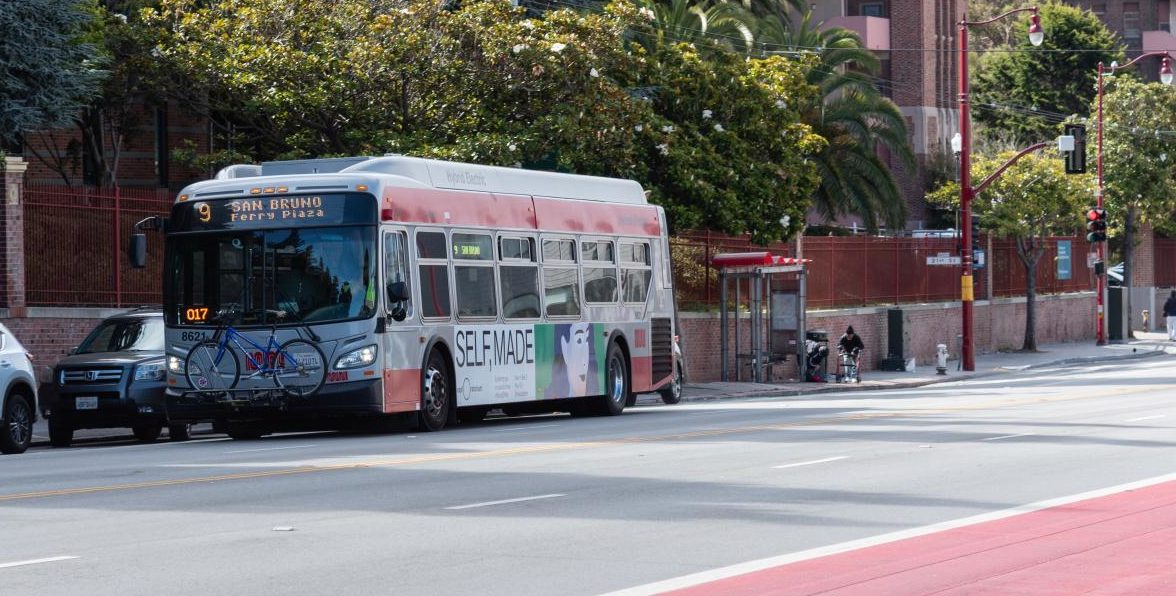
COVID-19 is causing transit agencies to make constant adjustments to rapidly changing circumstances, including altering service plans. Recalibrating service provision is critical to enabling essential trips while minimizing the public health risks associated with crowding on transit vehicles.
Transit has proven indispensable to the pandemic response, even though ridership has fallen significantly – on average 77%, according to TransitApp, which primarily tracks usage in North American cities. People who continue to ride transit are essential to life in cities — they are keeping people fed, caring for the sick, and making sure the lights stay on. Transit agencies must enable these trips, protect their workforce, and maintain standards for physical distance between passengers — all while operating under tremendous financial strain and uncertainty.
Providing sufficient service for essential trips without the availability of the full transit workforce — many of whom are sick or quarantined — is not easy. But it is necessary. It requires redistributing service where it is needed most. Making these adjustments is an urgent matter: Black and brown people account for a disproportionately high share of both the frontline transit workforce and the essential workers riding transit during the crisis. Service decisions that minimize crowding will protect their health and safety.
In this post, we provide an overview of the initial steps some agencies have taken to reallocate service along essential routes. We will explore how to plan and execute these decisions in more detail in future posts.
San Francisco Muni prioritizes equity and access to medical facilities

MUNI’s “essential service network,” as of April 8th.
SF Muni recently announced a new service plan concentrated entirely on the agency’s 17 highest ridership lines. While this represents a steep drop in the number of Muni routes, it means the agency is deploying its constrained resources in a way that will minimize crowding and protect health.
The 17 lines were identified using a combination of three factors: transit travel patterns observed during the COVID-19 shelter-in-place order; Muni’s existing Equity Strategy, which prioritizes service in neighborhoods with high shares of people of color and households with low incomes; and connections to medical facilities.
On lines experiencing crowding, Muni is running buses more frequently to disperse riders on vehicles. On Twitter, SFMTA Director Jeff Tumlin explained that the agency’s current two priorities are protecting the health and safety of the workforce, and delivering essential workers to work safely.
We’ll be adding service to workhorse lines to help maintain social distancing. Key lines that serve hospitals, commercial corridors, and neighborhoods where residents have the fewest mobility alternatives
— Jeffrey Tumlin (@jeffreytumlin) April 6, 2020
By consolidating around a core network, Muni is optimizing its service to equitably provide access to essential needs and medical care, and to keep workers who must ride transit safe.
Pittsburgh Port Authority maintaining off-peak service, preserving frequency on routes that serve medical facilities and essential workers
A large share of Pittsburgh’s workforce, as in most of the country, is now working from home. The normal peaks in transit ridership have therefore flattened substantially — there is not as much variation in usage between “rush hour” and the rest of the day.
The Port Authority of Allegheny County has tailored its service reductions accordingly, and has made its biggest reductions in frequency to peak hour service. Exceptions to the reductions in peak service include routes serving medical facilities and routes carrying essential workers and/or those not able to work from home.
The Port Authority is also reallocating its larger buses to routes that have maintained the highest ridership, to prevent crowding.
Boston’s MBTA prioritizes medical facilities and routes experiencing crowding, trimming service on routes serving commuters who work from home
The MBTA has yet to dramatically reduce service despite ridership declines in the range of 75-90 percent. Where the agency is cutting back, it is basing decisions on emerging ridership patterns and the need to prioritize certain routes over others.
The MBTA is focusing on serving medical personnel, adding more buses on routes serving the Longwood medical area in Boston, Lawrence Memorial Hospital in Medford, and the Steward Satellite Emergency Department in Quincy. The MBTA is also adding frequency on busier bus routes to ensure riders and transit workers can maintain safe physical distance on board. Routes where the MBTA is reducing service include the weekday express routes, where most of the riders are now working from home.